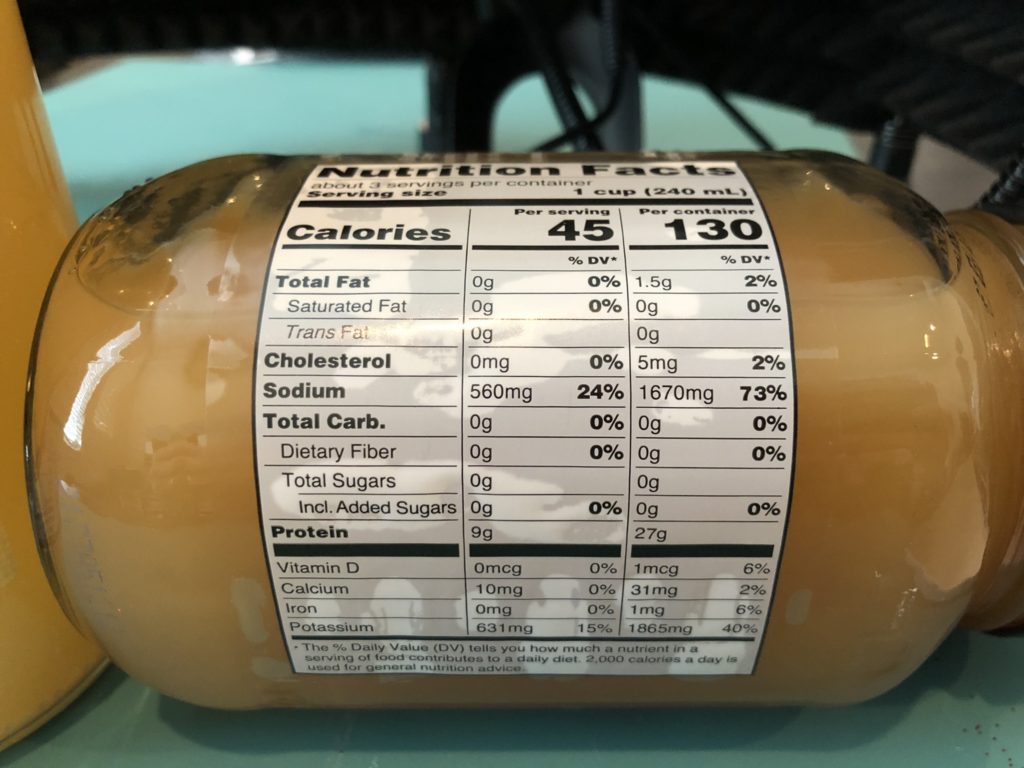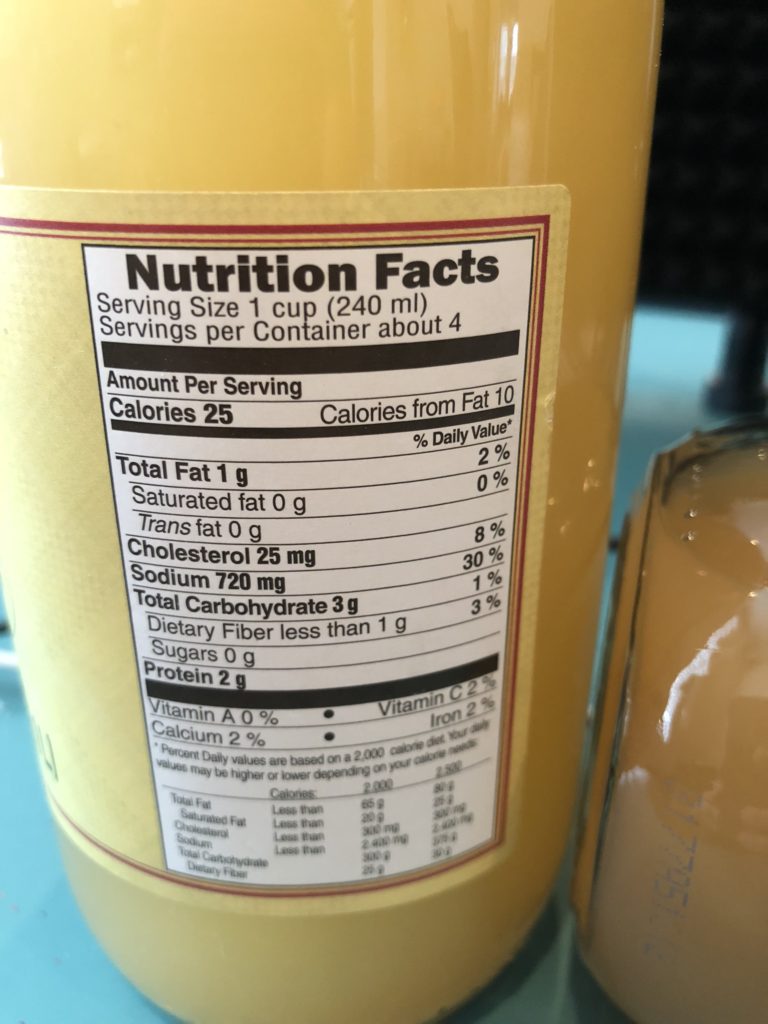Podcast: Play in new window
Subscribe: Apple Podcasts | RSS
The way I think about the difference is: how long did they boil the water in with the bones? The longer boiled the more of the "good stuff" from the bone will come out. For example, more calcium and collagen will come out the longer boiled, except in the case of the rib bone, according to the study below at 8 hours it doesn't seem to give off more calcium, but femur(leg) will.
Super quick summary:
The containers of "broth" at the store lean more towards a water in that they have less protein, 2gm in my jar (from the collagen), and fewer vitamins/minerals. #notboiledaslong and the get the fat out.
Whereas the "Bone broth" leans (keyword is just "leans," as no one would argue 45Cals is a meal) more towards a meal in that my jar had 9gm of protein and 45. #boiledlonger


Other Interesting tidbits: not mentioned in the audio:
Calcium and Bone Broth:
https://www.ncbi.nlm.nih.gov/pubmed/8082052 Calcif Tissue Int. 1994 Jun;54(6):486-8. Chicken soup revisited: calcium content of soup increases with duration of cooking. Rosen HN1, et al.
Because low dietary calcium intake may accelerate bone loss, patients often are advised to increase their dietary intake of calcium. However, some patients may be unable to tolerate good calcium sources such as dairy products. We postulated that the calcium content of soups and stews could be increased by prolonged cooking with a beef bone. Three experiments were done to prove this theory: (1) a bone soup made with a beef bone and distilled water, cooked for 24 hours; (2) a bone-vegetable soup cooked the same way; and (3) a vegetable soup made the same way but without the bone. It was concluded that prolonged cooking of a bone in soup increases the calcium content of the soup when cooked at an acidic, but not at a neutral pH.
Rib vs femur(leg):
"more (p < 0.05) calcium was extracted from the rib bone at first, but that the amounts extracted remained constant thereafter until the end of the test ... Conversely, the amount of calcium extracted from the leg bone increased over time, therefore, at the 8th hour and thereafter, the amount extracted exceeded (p < 0.05) that extracted from the rib bone."
***So...if only cooking a short time if I want calcium I should use rib bone, but if I am boiling 8+hrs use leg bone as it seemingly has more calcium to give.***
"The amounts of magnesium from both broths increased over time, but those from the rib bone were significantly higher (p < 0.05) from the beginning until the 8th hour. These discrepancies can be reasonably explained by the facts that the rib sample comprised three bone pieces, which had more contact surfaces for Ca and Mg extraction from the outer compact portion of the bone initially. However, leg bones are mainly composed of mineral matrix and thus can extract Ca and Mg constantly during cooking."
"Calcium supplements that are made from bonemeal (finely crushed bone) have a lead level in the range of a few to 10 μg/g, and some even contain cadmium (~2 μg/g) ."
Results: "Reducing the broth pH from 8.38 to 5.32 significantly (p < 0.05) increased Ca and Mg extraction by factors of 17.4 and 15.3, respectively. A long cooking time, > 8 h, yielded significantly higher (p < 0.05) Ca and Mg extraction than shorter cooking times. The extraction characteristics of metals, particularly Ca, Mg, Cu and Al, from the leg and rib bones differed. The between-species variations in extraction were larger than those of within-species."
Conclusion: "...Like increasing acidity and simmering time, as demonstrated herein, the dissolution of bone mineral has also been found to be positively associated with many other factors, such as temperature, surface area and agitation. Additionally, variation in bone tissue microstructure and mineral distribution across animal bones also affects the mineral levels available for extraction. Therefore, bone minerals that are extracted in broths may be affected by these factors and so be difficult to standardize. The calcium and magnesium levels in home-made or commercial broth/soup, according to the literature and current study, are no more than low tenths of a milligram per serving. These levels are generally a few percent of the DRIs, and so their contributions to daily Ca and Mg requirements are considered to be small. The heavy metals such as Pb and Cd that are present in commercial broth/soup were found herein to have concentrations in the range of a few micrograms per serving. Thus the hazard quotients are low and so the risks that are associated with ingestion of heavy metals from broth are considered minimal."
https://www.ncbi.nlm.nih.gov/pmc/articles/PMC5533136/